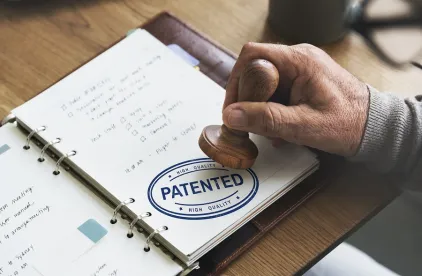On November 10, 2018, the inter-agency Committee on Foreign Investment in the United States (CFIUS) will begin a pilot program that will implement certain procedures and mandatory reporting requirements as enacted in the Foreign Investment Risk Review Modernization Act of 2018 (FIRRMA). CFIUS is a committee of representatives of various federal agencies, and is chaired by the Department of Treasury.
CFIUS was created by Executive Order 11858 on May 7, 1975, pursuant to the Defense Production Act of 1950, and since its creation it has evolved through various executive orders and legislation. The Committee was designed to investigate potential transactions between U.S. companies and foreign persons in which the transaction would result in a change of “control” to the foreign person. “Control” is defined as “the power, direct or indirect, whether or not exercised, through the ownership of a majority or a dominant minority of the total outstanding voting interest in an entity, board representation, proxy voting, a special share, contractual arrangements, formal or informal arrangements to act in concern, or other means, to determine, direct, or decide important matters affecting the entity . . .” 31 C.F.R. § 800.204(a). CFIUS addresses obvious national security concerns that could arise when foreign persons own or control certain critical technology assets within the United States. Under FIRRMA, Congress has sought to clarify the CFIUS reporting process and its requirements.
The 2018 FIRRMA Pilot Program will cover “any U.S. business that produces, designs, tests, manufactures, fabricates, or develops a critical technology that is: (1) utilized in connection with the U.S. business’s activity in one or more Pilot Program Industries; or (2) designed by the U.S. business specifically for use in one or more Pilot Program Industries.” See Dept. of Treasury Fact Sheet. FIRRMA defines “critical technologies” as defense items covered by the International Traffic in Arms Regulations (ITAR), technologies listed on the Commerce Control List (CCL), technologies designed for nuclear equipment and development, and agents or toxins identified in regulations covering Select Agents and Toxins (7 C.F.R. part 331 etc.). See Foreign Investment Risk Review Modernization Act of 2018, 164 Cong. Rec. H 5674 (June 26, 2018). “Pilot Program Industries” include 27 industries the U.S. government has identified as significant for the national security and technological interests of the United States. Examples include aircraft manufacturing, electronic computer manufacturing, research and development in nanotechnology, and semiconductors.
The Pilot Program will also require mandatory declarations by critical technology companies participating in a transaction with a foreign entity. A mandatory declaration must be filed at least 45 days before the closing date of the transaction, after which the Committee has 30 days to respond. Failure to file a declaration when required could lead to a penalty equal in value to the transaction.
Because the Pilot Program will implement mandatory declarations and stiff penalties, companies would be wise to evaluate the details of the transaction as early as possible to determine if reporting is required. In particular, companies may want to evaluate the buyer in the context of its originating country, and determine if that country could be considered a national security concern by CFIUS (e.g., China or Russia). U.S. companies may also want to be aware of what technology will be transferred abroad through the transaction, and who ultimately will have access to that technology.
GC Survivor Kit
PTAB Patent Interpretation Standard
On November 13, 2018, the U.S. Patent & Trademark Office (PTO) officially changed the way it interprets patents, strengthening the position of all current and future patent holders.
By way of background, when a patent holder sues an alleged infringer for patent infringement, the alleged infringer often argues that the asserted patent is invalid because “prior art” patents, systems, or technology described in a printed publication, such as a technical paper, disclosed the patented system before the patent application was filed. If the court or a jury agrees, the court - always federal - can issue a judgment invalidating the patent because it lacks novelty (i.e., you cannot get a patent on pre-existing technology). Because of this, suing someone for patent infringement has always been an inherently risky proposition because it subjects the patent to the possibility of being declared worthless.
With the passage of the America Invents Act (AIA) in 2012, things got worse for patent holders. The AIA set up a “Patent Trial and Appeal Board” (PTAB) at the PTO, and empowered the PTAB to also invalidate patents at three different types of proceedings called (1) Inter Partes Review, (2) Post Grant review, and (3) Covered Business Method Review. Details regarding these proceedings are beyond the scope of this article, but each proceeding differs from the established court procedure in two significant ways. First, although a patent in court proceedings may only be invalidated through the use of “clear and convincing” evidence, the AIA allows the PTAB to use the much more relaxed “preponderance of the evidence” standard. Second, in court, what the patent covers and what it does not cover is governed by Phillips v. AWH Corp., in which the “words of a [patent] claim are generally given their ordinary and customary meaning,” that is, “the meaning that the term would have to a person of ordinary skill in the art in question at the time of the invention.” 415 F.3d 1303, 1312-13 (Fed. Cir. 2005).
However, under the AIA, the PTAB was required to use the “broadest reasonable interpretation” standard. This means that a patent might cover much more potentially invalidating “prior art” technology at the PTAB than it does in court. The upshot for patent holders was that there was a much greater chance that a patent would be declared invalid at the PTAB than it would in court. And this could happen even if a court had issued a different claim construction; since the standards were different at the PTAB, the PTAB need not have shown any deference to a prior court claim construction. In fact, after the AIA passed, the PTAB was invalidating patents at such a high percentage rate (upwards of 75 percent of the time), due both to the relaxed evidentiary standard and to the broad patent claim interpretation standard, that the PTAB was dubbed the “patent death squad” by patent holders.
That changed on November 13, 2018. Now, the PTAB will use the same “ordinary and customary meaning” Phillips standard that courts use to interpret patents. This will, undoubtedly, result in fewer patents being invalidated at the PTAB, because what the patent covers will be narrower than before; thus, fewer instances of “prior art” will be held as invalidating. In addition, the new rule requires that prior claim constructions by a court or the United States International Trade Commission, which can bar products from entering the United States if they infringe a patent, “will be considered.” Thus, not only are proceedings at the PTAB now in line with court proceedings, but prior court proceedings could influence PTAB decision making.
All of this is much to the delight of patent holders. Although it remains to be seen how much of a change this will really affect, any change strengthening the position of patent holders is seen by patent holders as key to enforcing their duly authorized patent rights. And, perhaps this may be beginning of the end for the “patent death squad.”






 />i
/>i

